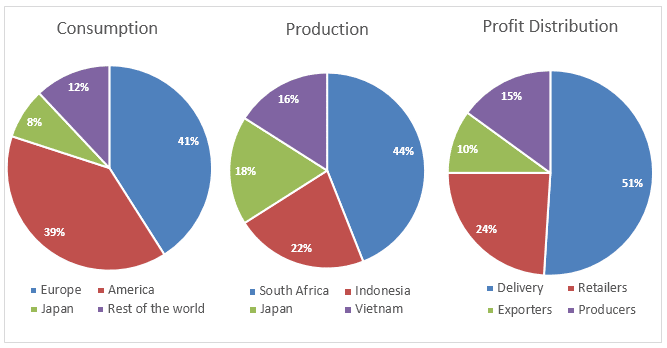Recent IELTS Exam 15 April 2023 India

Are you preparing to take the IELTS exam in India on April 15th, 2023? If so, it is important to be aware of the reading passages, listening and reading solutions, as well as writing task 1 and task 2 prompts that you may encounter. To help you prepare for the exam, we have compiled information on the content of the IELTS exam that took place on April 15th, 2023 in India. This data can provide you with an understanding of the types of questions you may expect in the reading, writing, listening, and speaking sections. Additionally, it can help you gain insight into how to plan for future exams. Read on to learn more about the IELTS exam that happened in India on April 15th, 2023.
Booking
Radio
Instrument (or Instruments) Not sure
Age
8.50
Piano
FEEDBACK
EURO
PERIOD
Impact
Pleasure
Colleagues
RESPONDENT
IMPACT
EQUIPMENT
SERVICES
11. A
12. B
13. C
14. B
17. B
18. C
22 B
23 A
26 C
Thursday
Experience
Practice
Definition
Skill
Children
Workshop
Planning
MEMBERSHIP
Passage 1: The Iditarod
Passage 2: Australian parrot and their adaptation
Passage 3: Marketing and mind control
1. TRUE
2. FALSE
3. NOT GIVEN
4. FALSE
5. TRUE
6. NOT GIVEN
7. CEREMONY
8. TWO MINUTES
9. HEALTH, MONETARY
10. PARTICULARLY, CHOSEN
11. COLOR
12. WRONG PRONUNCIATION
13. TEENAGER
14. I
15. H
16. G
17. D
18. C
19. H
20. D
21. C
22. B
23. ONE-SIXTH
24. 16TH CENTURY
25. MERCATOR
26.JOHN GOULD
27. B
28. A
29. C
30. D
31. B
32. NO
33. NOT GIVEN
34. NOT GIVEN
35. YES
36. NO
37. F
38. C
39. A
40. E
Writing Task 1:
Repeated Chart
The three pie charts below show coffee production and consumption around the world, and also the profit distribution.

SAMPLE 1
The pie charts illustrate the global coffee consumption, coffee production in four countries, and profit distribution among different segments of businesses related to coffee. It is evident that Europeans and Americans are the main coffee drinkers, while South Africa is the biggest coffee producer among the countries in the comparison.
Moreover, companies that deliver coffee make more profit than other organizations that are involved in this industry. According to the visuals, Europeans consume more than 40% of coffee globally, which is the highest ratio of coffee intake in the world. America consumes 2% less than that, while Japan consumes only 8% of global coffee. The rest of the world consumes 12% of the coffee. South Africa contributes 44% of coffee production, the highest among the four countries. Indonesia produces 22%, which is exactly half of South African coffee production.
Japan and Vietnam both produce 18% and 16% of coffee respectively. It is worth noting that despite being one of the top coffee producers, Japan’s coffee consumption ratio is comparatively low.
Finally, more than half of the profit from coffee is made by the delivery industries. Coffee retailers’ share of profit is approximately a quarter, while coffee producers and exporters make 10% and 15% of profits respectively.
SAMPLE 2
The two pie charts illustrate the worldwide consumption, production, and profit distribution of different sectors involved in the coffee business.
Overall, it is evident that Europeans are the highest consumers of coffee, with 41%, followed by Americans with 26%. South Africa, on the other hand, is the biggest producer, contributing 44% of the total coffee production globally.
In terms of profit, the delivery sector enjoys the most, with 51%, while exporters only make 10%. In terms of consumption, Japan has the least share at 8%, which could be attributed to the fact that tea consumption is higher than coffee in the country. In the production sector, Japan, Indonesia, and Vietnam contribute 18%, 22%, and 16% respectively.
To conclude, the pie charts suggest that Europeans are the biggest consumers of coffee, while South Africa is the major producer. Moreover, the delivery sector is the most profitable one in the industry.
Writing Task 2:
Question:Mobile phones and the Internet are very useful for old people. However, this section of the population has fewer users of mobile phones and the Internet. In what ways can mobile phones and the Internet be useful to old people? How can old people be encouraged to use this new technology?SAMPLE 1
The use of mobile phones and the internet has become increasingly popular in recent years, and yet the elderly population is considered to be the least likely to use these technologies. This is particularly true in developing countries, where access to the internet is often limited. Despite this, mobile phones and the internet can be incredibly useful for old people, allowing them to stay in touch with family and friends, access information, and keep up with current events.
First and foremost, mobile phones and the Internet can help the elderly stay in touch with family and friends. Texting, email, and social media platforms such as Facebook and Instagram make it easier to keep in contact with those far away. This can be especially beneficial for those who are no longer able to travel. Additionally, video chat services such as Skype and Facetime can bring people together for virtual visits, allowing elderly family members to stay connected with loved ones.
Furthermore, mobile phones and the internet also offer access to a wealth of information. Search engines and online databases can provide the elderly with access to medical and health information, research, news, and other resources. Additionally, they can be used to look up recipes, watch instructional videos, and learn new skills.
Finally, mobile phones and the internet can be used to help the elderly stay connected with their local community. By using location-based apps, they can find local events, activities, and services. They can also connect with like-minded individuals and participate in discussion forums.
Encouraging the elderly to use mobile phones and the internet can be a challenge, as many are unfamiliar with the technology. To help them become more comfortable with the devices, it is important to provide hands-on instruction and support. This can be done through classes and workshops, as well as one-on-one tutoring. Additionally, providing access to free or low-cost internet plans can also help to reduce the financial barrier for those who may not be able to afford the service.
In conclusion, mobile phones and the internet can provide the elderly with a number of benefits, from staying in touch with loved ones to finding information and connecting with their community. To ensure that the elderly can take advantage of these technologies, it is important to provide instruction and support, as well as access to free or low-cost internet plans.
SAMPLE 2
In this era of technology, mobile phones, and the Internet have become an integral part of life for most people. However, it seems that the elderly are not taking advantage of this technology as much as the younger generations. While using these technologies can be beneficial for the elderly, there are a few ways to encourage them to use mobile phones and the Internet.
First and foremost, mobile phones and the Internet can be used by the elderly to stay connected. It can help them to stay connected with friends and family, who might live far away. With access to video chat tools and social media, they can easily stay in touch with loved ones and even receive calls or messages from them. They can also keep up with the news and events that are happening around the world. Furthermore, they can use online resources to do research on any topics they’re interested in or to look up information they need.
In addition, mobile phones and the Internet can help the elderly to stay active and engaged. With the help of apps and websites, they can explore different types of activities and hobbies that they can take up. They can also stay healthy by using fitness and health apps to track their progress or follow healthy eating plans. Moreover, they can also use these technologies to attend virtual classes or workshops, or even engage in virtual social activities.
To encourage the elderly to use mobile phones and the Internet, it is important to ensure that they have access to the necessary equipment and understand how to use them. Offering basic training to the elderly on how to use these technologies can be very helpful. Additionally, providing support and assistance to them when they encounter any difficulties can help them to become more familiar and confident with using these technologies. Furthermore, implementing incentives, like discounts or rewards, can also motivate them to use these technologies.
In conclusion, mobile phones and the Internet can be very beneficial for the elderly. To encourage them to use these technologies, it is important to provide them with the necessary equipment and access, as well as offer support and training. Additionally, providing incentives can also help to motivate them to use these technologies.
SAMPLE 3
The elderly are often not as proficient in the use of mobile phones and the Internet as their younger counterparts. While mobile phones and the Internet can be beneficial to the elderly, there are a few ways to encourage them to use this new technology.
Mobile phones and the Internet can be used by the elderly to stay connected. With access to video chat tools and social media, they can easily keep in touch with their families and friends, even if they are living far apart. They can also use the Internet to stay up-to-date with current events and news or to do research on topics that interest them. In addition, these technologies can also help them to stay active and engaged. Apps and websites can provide them with access to different types of activities and hobbies, as well as help them to track their fitness and health progress.
To encourage the elderly to use mobile phones and the Internet, it is important to provide them with the necessary equipment and access. Offering basic training to the elderly on how to use these technologies can be very beneficial. Additionally, providing support and assistance to them when they encounter any difficulties can help them to become more confident with using these technologies. Furthermore, implementing incentives, like discounts or rewards, can also motivate them to use these technologies.
In conclusion, mobile phones and the Internet can be very useful for the elderly. To encourage them to use these technologies, it is important to provide them with the necessary equipment and access, as well as offer support and training. Additionally, providing incentives can also help to motivate them to use these technologies.





I know this if off topic but I’m looking into starting my own weblog and was curious what all is required to get set up? I’m assuming having a blog like yours would cost a pretty penny? I’m not very internet savvy so I’m not 100 sure. Any suggestions or advice would be greatly appreciated. Many thanks
Some truly select blog posts on this web site, saved to favorites.
Outstanding post, you have pointed out some excellent details , I also think this s a very good website.
Good write-up, I’m regular visitor of one’s site, maintain up the excellent operate, and It’s going to be a regular visitor for a long time.
I was suggested this web site by my cousin. I’m not sure whether this post is written by him as no one else know such detailed about my trouble. You are wonderful! Thanks!
It’s actually a great and helpful piece of info. I am satisfied that you just shared this useful info with us. Please stay us informed like this. Thank you for sharing.
I do not even understand how I ended up here, however I thought this publish used to be great. I do not recognise who you might be but definitely you’re going to a well-known blogger in the event you are not already 😉 Cheers!
I like what you guys are up too. Such intelligent work and reporting! Carry on the excellent works guys I have incorporated you guys to my blogroll. I think it will improve the value of my site 🙂
I’m still learning from you, while I’m making my way to the top as well. I absolutely love reading all that is posted on your site.Keep the stories coming. I loved it!
This web site is my aspiration, rattling great layout and perfect content material.
Hi, i think that i saw you visited my web site so i came to “return the favor”.I am trying to find things to improve my website!I suppose its ok to use a few of your ideas!!
Nice read, I just passed this onto a friend who was doing a little research on that. And he actually bought me lunch because I found it for him smile Therefore let me rephrase that: Thanks for lunch!
Youre so cool! I dont suppose Ive read anything like this before. So nice to seek out somebody with some original ideas on this subject. realy thanks for beginning this up. this website is something that’s needed on the internet, somebody with a bit originality. useful job for bringing one thing new to the internet!
I have recently started a site, the information you provide on this website has helped me greatly. Thanks for all of your time & work.
Hi my loved one! I wish to say that this post is awesome, great written and include almost all significant infos. I would like to look more posts like this .
Hello there, I discovered your blog via Google while searching for a comparable subject, your site got here up, it appears good. I have bookmarked it in my google bookmarks.
Your place is valueble for me. Thanks!…
Greetings from Los angeles! I’m bored to tears at work so I decided to browse your blog on my iphone during lunch break. I love the info you provide here and can’t wait to take a look when I get home. I’m amazed at how fast your blog loaded on my phone .. I’m not even using WIFI, just 3G .. Anyways, very good blog!
You made some decent points there. I looked on the internet for the topic and found most guys will consent with your site.
Good write-up, I?¦m normal visitor of one?¦s web site, maintain up the excellent operate, and It’s going to be a regular visitor for a lengthy time.
I do not even know the way I stopped up right here, but I thought this post was great. I do not recognise who you are however definitely you are going to a well-known blogger should you aren’t already 😉 Cheers!
I just like the valuable information you supply for your articles. I will bookmark your weblog and take a look at again here frequently. I am rather certain I will learn many new stuff proper here! Good luck for the next!
I don’t commonly comment but I gotta state regards for the post on this amazing one : D.
This blog is definitely rather handy since I’m at the moment creating an internet floral website – although I am only starting out therefore it’s really fairly small, nothing like this site. Can link to a few of the posts here as they are quite. Thanks much. Zoey Olsen
I see something really special in this site.
I delight in, cause I found just what I was having a look for. You have ended my 4 day lengthy hunt! God Bless you man. Have a great day. Bye
Appreciating the time and energy you put into your blog and in depth information you offer. It’s good to come across a blog every once in a while that isn’t the same outdated rehashed material. Great read! I’ve saved your site and I’m including your RSS feeds to my Google account.
Thanks for sharing excellent informations. Your website is very cool. I am impressed by the details that you have on this web site. It reveals how nicely you perceive this subject. Bookmarked this website page, will come back for extra articles. You, my friend, ROCK! I found simply the info I already searched all over the place and simply could not come across. What a great web-site.
Hi there, simply become aware of your blog through Google, and located that it is really informative. I’m gonna be careful for brussels. I’ll appreciate in the event you continue this in future. Numerous people will likely be benefited from your writing. Cheers!
I love assembling utile information , this post has got me even more info! .
I conceive you have observed some very interesting points, appreciate it for the post.
I like this website very much, Its a very nice office to read and incur info . “The mark of a good action is that it appears inevitable in retrospect.” by Robert Louis Stephenson.
There are some interesting points in time on this article however I don’t know if I see all of them middle to heart. There’s some validity but I’ll take hold opinion until I look into it further. Good article , thanks and we would like more! Added to FeedBurner as well
Wow, awesome weblog layout! How long have you ever been blogging for? you make blogging look easy. The total look of your web site is great, as neatly as the content material!
I am no longer sure where you are getting your information, however great topic. I needs to spend a while learning more or working out more. Thanks for magnificent info I used to be on the lookout for this info for my mission.
Hi I am so grateful I found your web site, I really found you by mistake, while I was researching on Askjeeve for something else, Nonetheless I am here now and would just like to say cheers for a tremendous post and a all round thrilling blog (I also love the theme/design), I don’t have time to go through it all at the minute but I have saved it and also added in your RSS feeds, so when I have time I will be back to read a great deal more, Please do keep up the awesome job.
I admire your work, regards for all the informative articles.
What i do not realize is in truth how you’re not really much more smartly-appreciated than you might be right now. You are so intelligent. You already know therefore significantly on the subject of this matter, produced me for my part consider it from so many various angles. Its like men and women aren’t interested unless it’s one thing to do with Lady gaga! Your individual stuffs nice. All the time care for it up!
You have brought up a very wonderful points, thankyou for the post.
I like what you guys are up also. Such clever work and reporting! Carry on the excellent works guys I’ve incorporated you guys to my blogroll. I think it will improve the value of my site :).
I think you have noted some very interesting points, thankyou for the post.
Just want to say your article is as amazing. The clearness in your post is simply excellent and i could assume you are an expert on this subject. Well with your permission allow me to grab your RSS feed to keep updated with forthcoming post. Thanks a million and please continue the rewarding work.
It?¦s actually a great and helpful piece of information. I?¦m glad that you just shared this helpful information with us. Please keep us informed like this. Thank you for sharing.
You are a very intelligent individual!
Your place is valueble for me. Thanks!…
Thanks on your marvelous posting! I certainly enjoyed reading it, you can be a great author.I will be sure to bookmark your blog and will eventually come back sometime soon. I want to encourage yourself to continue your great job, have a nice morning!
You need to participate in a contest for one of the best blogs on the web. I’ll recommend this site!
Wonderful site. Plenty of helpful info here. I’m sending it to some pals ans additionally sharing in delicious. And of course, thank you on your sweat!
It’s a pity you don’t have a donate button! I’d without a doubt donate to this outstanding blog! I suppose for now i’ll settle for book-marking and adding your RSS feed to my Google account. I look forward to new updates and will talk about this blog with my Facebook group. Chat soon!
Would you be concerned about exchanging hyperlinks?
Way cool, some valid points! I appreciate you making this article available, the rest of the site is also high quality. Have a fun.
You are my aspiration, I have few web logs and often run out from to brand.
I will right away grab your rss as I can’t find your e-mail subscription link or e-newsletter service. Do you have any? Please let me know so that I could subscribe. Thanks.
Superb blog! Do you have any helpful hints for aspiring writers? I’m planning to start my own site soon but I’m a little lost on everything. Would you advise starting with a free platform like WordPress or go for a paid option? There are so many choices out there that I’m completely overwhelmed .. Any ideas? Cheers!
This is a very good tips especially to those new to blogosphere, brief and accurate information… Thanks for sharing this one. A must read article.
I’d should examine with you here. Which isn’t something I often do! I enjoy reading a post that will make people think. Also, thanks for permitting me to comment!
What i do not realize is in fact how you’re not actually a lot more smartly-appreciated than you may be right now. You’re very intelligent. You already know thus considerably in terms of this topic, produced me for my part imagine it from so many varied angles. Its like men and women aren’t interested until it is one thing to accomplish with Girl gaga! Your individual stuffs excellent. Always deal with it up!
I’m not that much of a internet reader to be honest but your blogs really nice, keep it up! I’ll go ahead and bookmark your site to come back later on. Many thanks
I haven’t checked in here for a while as I thought it was getting boring, but the last few posts are great quality so I guess I’ll add you back to my daily bloglist. You deserve it my friend 🙂
I like this web blog its a master peace ! Glad I detected this on google .
Some genuinely wonderful work on behalf of the owner of this web site, dead outstanding content.
Well I sincerely enjoyed studying it. This subject procured by you is very helpful for accurate planning.
Wow! Thank you! I always wanted to write on my blog something like that. Can I take a portion of your post to my website?
I have read some just right stuff here. Certainly price bookmarking for revisiting. I surprise how so much effort you put to create the sort of magnificent informative website.
You have brought up a very wonderful details , thankyou for the post.
naturally like your web site but you need to test the spelling on several of your posts. Many of them are rife with spelling issues and I to find it very troublesome to inform the reality then again I will definitely come again again.
I regard something truly special in this website.
I wanted to thank you for this great read!! I definitely enjoying every little bit of it I have you bookmarked to check out new stuff you post…
I just like the valuable information you supply to your articles. I’ll bookmark your blog and check once more right here regularly. I am moderately certain I will be told many new stuff right here! Best of luck for the following!
You have brought up a very excellent points, thanks for the post.
I truly enjoy reading through on this site, it holds great blog posts.
I gotta favorite this web site it seems very beneficial extremely helpful
I’d always want to be update on new posts on this site, saved to fav! .
It’s really a great and useful piece of information. I am glad that you shared this useful info with us. Please keep us informed like this. Thank you for sharing.
Saved as a favorite, I really like your blog!